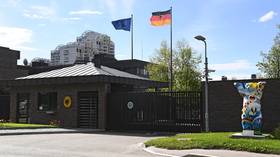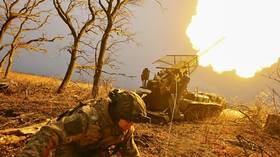Indian army conducts first patrols on disputed border with China

The Indian Army announced on Monday that it had carried out patrols at one of five friction points along the border with China for the first time since deadly clashes between the two countries’ troops in 2020.
The development comes after the two nations agreed to resume patrolling based on agreements reached prior to their four-year military and diplomatic standoff. The truce was announced last month on the eve of the BRICS Summit in Kazan, Russia, where Indian Prime Minister Narendra Modi and Chinese President Xi Jinping held their first full-fledged bilateral meeting in nearly five years.
“Following the consensus reached between the Indian and Chinese sides for disengagement and resumption of patrolling in Depsang and Demchok, the Indian Army’s patrol to one of the patrolling points in Depsang was successfully conducted today. This is yet another positive step toward maintaining peace and tranquility on the LAC,” the Indian Army’s ‘Fire and Fury Corps’ stated in a post on X.
According to a report by The Hindu, while disengagement in the Demchok and Depsang areas of the Eastern Ladakh region has been completed and patrolling has resumed – allowing the Indian Army to access areas they had reached in January 2020 – the two countries will now discuss disengagement and patrolling arrangements in other contested areas along the ill-defined border known as the Line of Actual Control (LAC). This includes so-called “buffer zones” such as Galwan Valley, Pangong Tso, Gogra, and Hot Springs. As per the understanding between the two sides, The Hindu noted that to avoid face-offs during patrols and to prevent clashes, the timing and frequency of patrols would be coordinated.
Commenting on the disengagement efforts, Indian Foreign Minister Subrahmanyam Jaishankar said at a press conference in Canberra, Australia on Tuesday that the two countries also have “other challenges to address.”
“On October 21, we concluded the last set of disengagement agreements; we had completed some earlier. These are currently in the process of being implemented. The last agreement primarily concerned the patrolling rights of the two sides. So we think, all in all, it’s a positive development,” he stated.
#WATCH | Canberra, Australia: On disengagement between India & China in Depsang & Demchok and the relation between the two countries, EAM Dr S Jaishankar says, " What we negotiated on October 21 was the last set of disengagement agreements, which essentially means after the… pic.twitter.com/wDMPYZjD5C
— ANI (@ANI) November 5, 2024
Indian Prime Minister Modi and Chinese President Xi agreed in Kazan that their foreign ministers and national security advisers would hold a detailed meeting to further build on the agreements achieved, Jaishankar noted.
During their meeting in Russia, the Indian and Chinese leaders welcomed the agreement for complete disengagement and resolution of issues. Modi underscored the importance of “properly handling differences and disputes and not allowing them to disturb peace and tranquility,” while Xi emphasized that the two sides should strengthen communication and cooperation, as well as properly manage differences and disagreements. He stated that both nations should “continue to uphold their important understandings,” asserting that “China and India are each other’s development opportunities rather than threats, and cooperative partners rather than competitors.”













